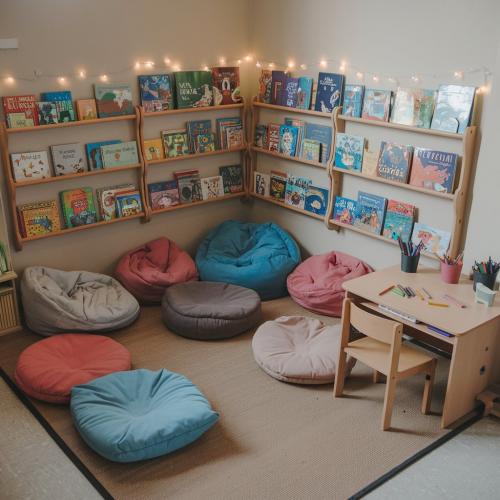Creating a Fun and Engaging Writing Area for Early Years
Creating an Inviting Writing Space
Creating a fun writing area can significantly boost engagement and literacy skills in early years. An inviting space encourages children to spend more time exploring their creativity. Colourful, child-friendly furniture can make a significant difference in making the area more appealing to young learners.
The layout of the writing area also influences engagement. Arrange the furniture in a way that allows easy movement and access to supplies. Creating cosy nooks with cushions or bean bags can provide comfortable spots where children feel motivated to write and mark-make, fostering a sense of ownership and enthusiasm.
Incorporating elements such as bright rugs and wall decorations can make the area visually stimulating. These elements create a welcoming environment that encourages children to express their thoughts and ideas freely, promoting a positive attitude towards writing.

Essential Supplies for a Writing Area
Incorporate a variety of mark-making supplies like crayons, markers, and chalk to stimulate creativity. These tools help children experiment with different textures and colours, making the writing experience more engaging. It is essential to provide a wide range of materials to cater to different preferences and learning styles.
Using supplies with varying textures and colours can enhance sensory experiences. For instance, chalk on a blackboard or crayon on paper offers different tactile feedback, which can be intriguing for children. This variety helps keep activities fresh and exciting, fostering a love for writing and drawing.
Ensure there are enough materials for all children to avoid frustration and encourage sharing. Having ample supplies also allows for uninterrupted creative sessions, keeping children focused and engaged in their writing activities.
Incorporate reference books, shapes to trace, or patterns for children to reference while practising their mark-making skills. Ensure these references are colourful and intriguing for children, inspiring them to copy and mark-make.

Incorporating Storybooks and Visual Aids
Storybooks play a significant role in inspiring writing. They provide examples of different writing styles and narratives, sparking ideas for young writers. Having a variety of books available encourages children to explore different genres and themes.
Visual aids can boost creativity by providing prompts and inspiration for writing. Posters, pictures, and word walls can serve as reference points, helping children expand their vocabulary and imagination. These aids make the writing process more interactive and engaging.
Integrate these resources effectively by placing them within easy reach. Create a cosy reading corner with a bookshelf and comfortable seating. Rotating the books and visual aids regularly can keep the content fresh and exciting, maintaining children's interest.
Showcasing Children's Writing
Showcasing children's work emphasises the importance of their efforts. A dedicated display area boosts their confidence and motivates them to improve their writing skills. Seeing their work valued and celebrated encourages a sense of pride and accomplishment.
 Creating a dynamic display area involves rotating the showcased work regularly. This practice ensures that all children can see their work displayed. It also keeps the display interesting and relevant, reflecting the ongoing progress of the class.
Creating a dynamic display area involves rotating the showcased work regularly. This practice ensures that all children can see their work displayed. It also keeps the display interesting and relevant, reflecting the ongoing progress of the class.
Incorporate different forms of writing, such as stories, poems, and drawings, in the display. This variety showcases the diverse talents and creativity of the children, making the display area a vibrant and inspiring part of the classroom.
Regularly Updating the Writing Area
Regular updates to the writing area keep children interested and engaged. Seasonal or thematic changes can make the space feel new and exciting. For example, incorporating autumn leaves in the decoration or having a winter-themed storytelling corner can create a fresh atmosphere.
Offer ideas for rotating supplies and materials to maintain interest. Introducing new mark making tools or storybooks periodically can reignite enthusiasm. This practice prevents the area from becoming monotonous and encourages continuous exploration and creativity.
Regularly updating the writing area also provides opportunities to introduce new learning objectives. For instance, focusing on a particular writing skill or theme can guide the activities and resources available, aligning the space with educational goals.
